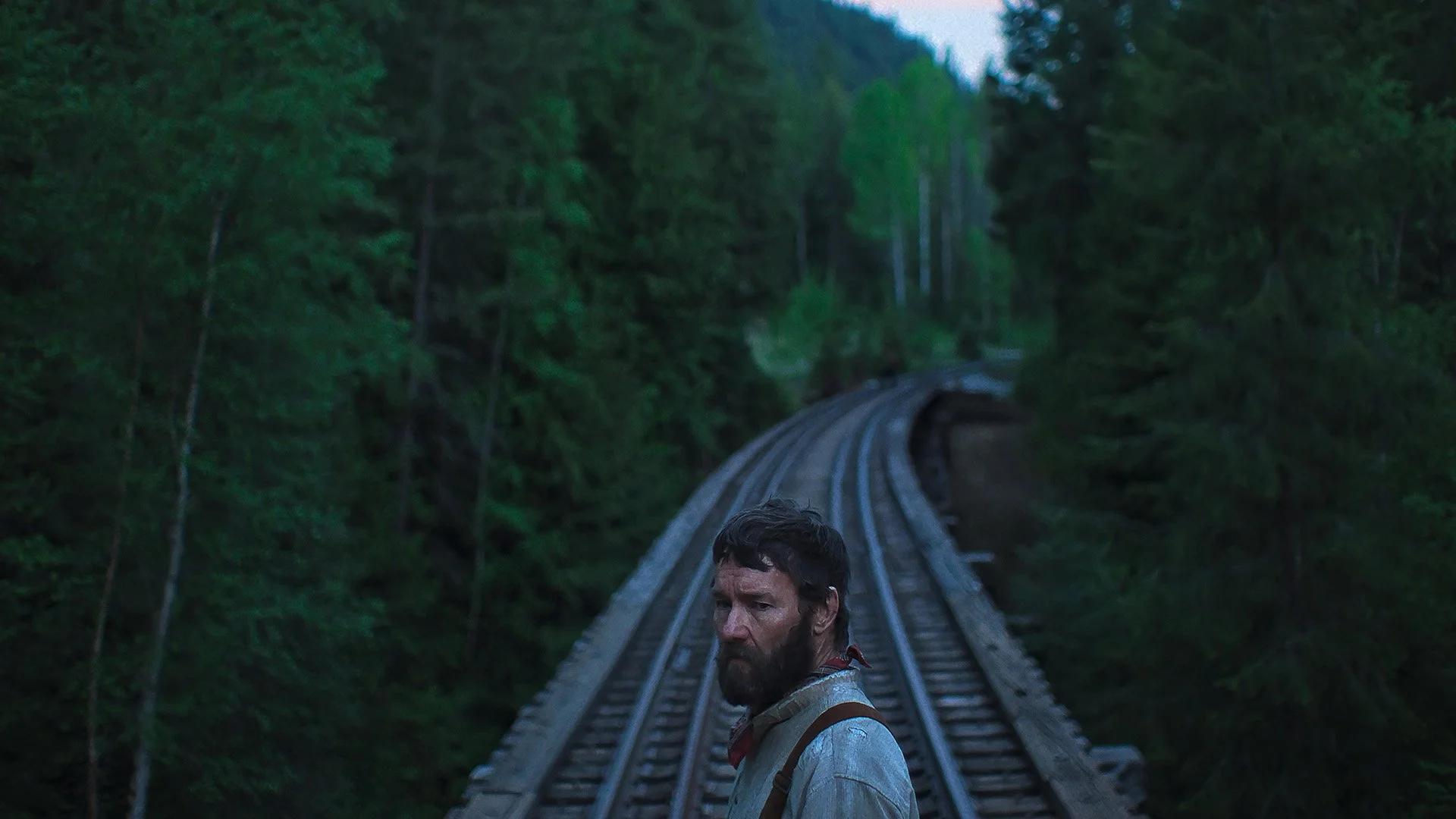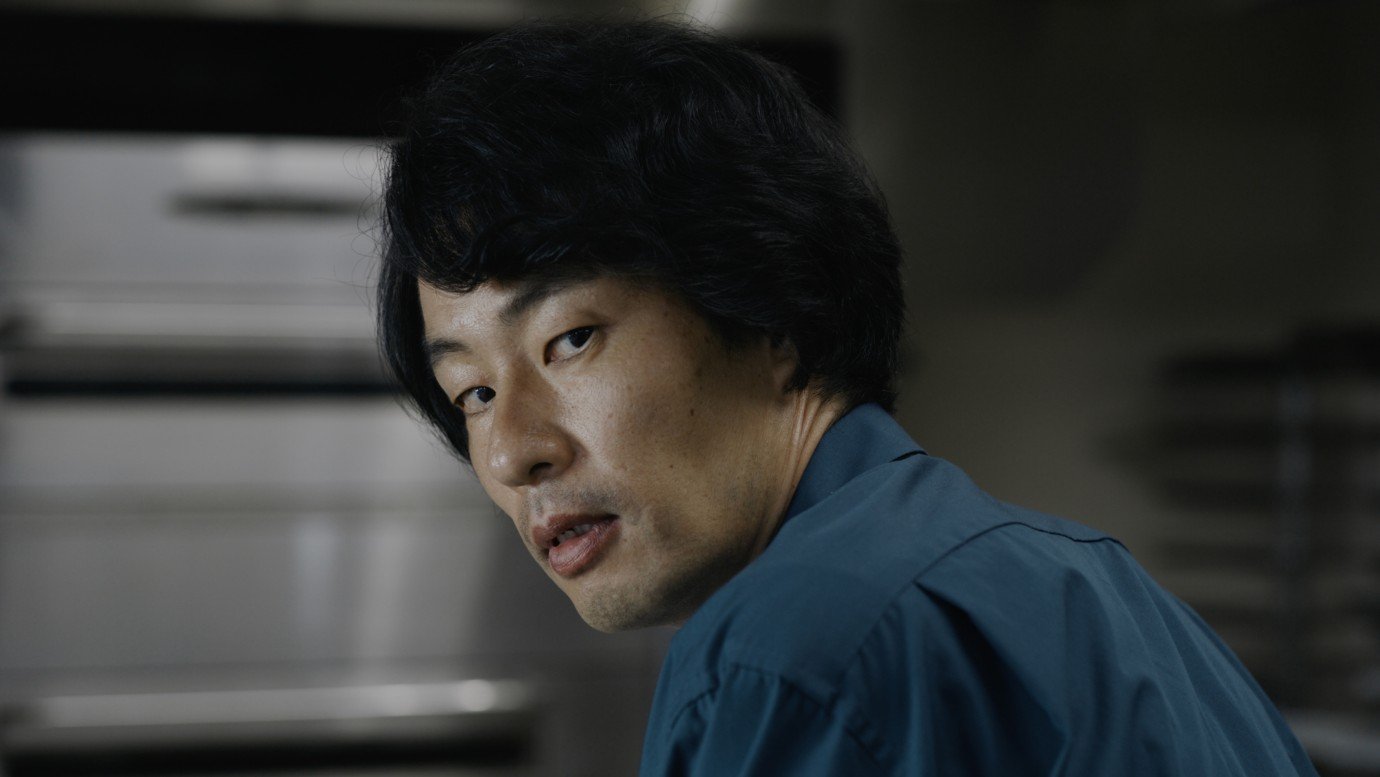Review: The Green Knight (2021)
David Lowery’s The Green Knight is a bold act of revisionism that manages to reconfigure the thematic focus of a key work of medieval art without losing the disarming strangeness of the material. It has some of the blood and sex that viewers now associate with medieval filmmaking in the wake of Game of Thrones, but it does away with the mundane and miserabilist presentation of the medieval world that was popularized through the HBO series. In Lowery’s film, England in the Early Middle Ages is a far stranger place than that of fictional Westeros. Not only is magic possible here, but the bounds of reality are as permeable as the brush at the edge of the forest; all the characters in the film need to do is pass through the brush to experience a shift in their entire world.
Lowery’s film is adapted from the famous and influential 14th-century Arthurian poem, “Sir Gawain and the Green Knight,” written by an unknown poet, and keeps much of the poem’s narrative intact. The narrative is rather complicated, but I feel I must summarize it in relative detail for any subsequent commentary to make sense. It’s also important to point out some key differences between the film and the written text.
In King Arthur’s Camelot, Gawain (Dev Patel) is the nephew of the King (Sean Harris) and hungry to become a knight (he is already a knight in the poem, but the youngest of the Round Table). During a Christmas feast (a New Year’s Eve feast in the poem), a mysterious Green Knight (Ralph Ineson) enters the court and challenges the knights to a game. If a knight can land him a blow, he’ll win his green axe, but in one year’s time, the knight must seek out his Green Chapel, where the Green Knight will return the blow in kind to the knight. Gawain, hungry for honour and renown, takes up the challenge, but the Green Knight does not defend himself. Instead, he kneels and Gawain beheads him with a stroke of Excalibur. But instead of dying, the Green Knight picks up his severed head and tells Gawain that he will see him in one year’s time at the Green Chapel to return him his blow. Most of the year passes and as Christmas approaches, Gawain sets out on his quest to find the Green Chapel to fulfill his oath to the Green Knight, coming across mysterious figures and strange challenges in the lands and forests along the way.
Gawain’s quest is a classic quest narrative—arguably the classic quest narrative. He crosses the threshold of Camelot, meets with mysterious individuals on miniature quests or challenges of their own, and eventually has to face up to the consequences of his actions when he ultimately meets the Green Knight at the Green Chapel. But the film is not conventional in the sense of proceeding as modern viewers expect it to; neither its narrative nor its visual style resemble that of most medieval films and shows, like the aforementioned Game of Thrones. For instance, The Green Knight does not follow modern story structure, with rising action, peaks and valleys of confrontation and narrative progression, or a clear character arc for Gawain. Rather, it retains the poem’s episodic structure and uses each confrontation as a means of reflecting back on the larger themes of the work. Sequences do not build one upon the other. Rather, each sequence reveals more of the whole—of Gawain as a character and of the fuller implications of his quest.
Furthermore, the visual presentation of these encounters blends contemporary and medieval approaches to framing and lighting. Lowery and cinematographer Andrew Droz Palermo favour natural light throughout, creating a dim, shadowed lighting approach that is reminiscent of many contemporary prestige pictures and could satisfy the superficial beauty of a One Perfect Shot post. But the framing is more deliberately medieval and reminiscent of two-dimensional illuminations or wall paintings of the past. Characters are often placed in the centre of the frame, and lights and special effects or props are used to replicate the flourishes you’d find in a medieval painting. For instance, the crowns of the King and Queen resemble the golden halo that would be placed on royalty or the Holy Family in paintings; the physical prop replicates the artistic embellishment.
As well, Lowery and Palermo vary their visual approach for each encounter to match that of different styles of medieval, and specifically Arthurian, art. An encounter with a boy (Barry Keoghan) on a battlefield littered with dead bodies is shot almost entirely in a single wide angle take, with the boy skirting the edge of the frame and Gawain passing diagonally across the frame on horseback. The camera moves with Gawain and the boy flits in and out, like a figure drawn into the margins of a manuscript. In a later scene, Gawain has to help the ghost of a young woman named Winifred (Erin Kellyman), and Lowery and Palermo drape the entire scene in mist that evokes paintings of Avalon. There’s a beauty to Lowery and his fellow filmmakers’ dedication to medieval imagery in The Green Knight, but you almost can’t blame a casual moviegoer for being taken aback at how the film skirts conventional imagery. And if the fellow moviegoers at my screening of The Green Knight were indicative of the whole, many casual moviegoers are being taken aback with this entire movie.
In fact, The Green Knight has a confrontational approach in all of its filmmaking choices. Its narrative structure disrupts the way we expect stories to be told nowadays, its visual style defamiliarizes and makes deliberately strange the natural world and visions of knights and the Middle Ages, and its revisionist approach to the Arthurian legend goes against the heroic championing of chivalry and honour that is one of the key messages of the poem. In short, it seems to be a film that frustrates the generic assumptions of the material, both in a contemporary and classical sense, making it a bold, but likely, divisive picture to watch.
Its revisionist approach centres on the character of Gawain. In the poem, Gawain is young and virtuous; in Lowery’s film, he’s something of a layabout. We first meet him drunkenly sleeping in a whorehouse on Christmas morning, where his commoner lover, Essel (Alicia Vikander), wakes him and encourages him to attend mass. When the Green Knight appears, he is scared of the knight's magical presence, but sees it as an opportunity to win renown in the court. In both film and poem, Gawain is naive and inexperienced; the Green Knight’s challenge is a chance for him to win honour and renown in the court. But Lowery’s film seeks to show that the very pursuit of honour can be a selfish quest, while the poem affirms the virtuosity of such a quest. In an early scene, Gawain says that he wants to be great, to which Essel asks him, what’s the matter with simply being good? That line seems to summarize the film’s revisionist approach, which uses Gawain and his quest to investigate the notion of chivalry and question whether the pursuit of honour is truly honourable.
In many key ways, the film reminds me a great deal of Alex Garland’s Annihilation, with which it shares a structural approach and similar deconstruction of its central character. Both films are about flawed protagonists heading out on a quest into an unknown region that bends reality, having a series of increasingly bizarre encounters with other characters and the wild within that region, and eventually confronting a mysterious antagonist that forces them to understand that the bizarreness of what they are encountering stands as a metaphorical extension of their own personal dysfunctions. To paraphrase Yoda’s words to Luke Skywalker about the cave on Dagobah in The Empire Strikes Back, what you’ll find in the mysterious region is only what you take with you.
The question I wrestle with in a film like The Green Knight is similar to questions posed by films as disparate as James Gray’s Ad Astra or Martin Scorsese’s The Last Temptation of Christ: how much can I admire a film that I profoundly disagree with philosophically? In all three cases, the answer turns out to be: a lot. Just as Ad Astra works against the transcendent nature of space travel and exploration that is so essential to science-fiction, and Scorsese’s The Last Temptation of Christ rejects the divinity of Christ in order to explore his humanity, The Green Knight rejects the notion of chivalry in order to investigate just what the pursuit of honour can do to one man. The film even culminates in a bold sequence inspired by Martin Scorsese’s The Last Temptation of Christ, so Lowery clearly had the comparison in mind when crafting the film.
To my mind, the beauty of chivalric poetry and the notion of knighthood as a whole is that it forces men to try to be more than they are, to seek to achieve perfection in order to spread goodness and meaning in the world. They are deliberately trying to grasp something that exceeds their reach, but therein lies the nobility of their attempt; they can never truly succeed, but the meaning is in the attempt to achieve that perfection. The Green Knight questions whether this entire attempt is worthwhile and whether it’s mostly an excuse for egotism and self adulation. It’s difficult to reconcile my beliefs with that of the film, but the conflict between the two does make The Green Knight a film I want to engage with and dig into.
Ultimately, like Scorsese’s film, The Green Knight is a heretical adaptation of its source material, but the dedication and artistry of its heresy is such that I find it hard to deny its power. It cannot be the definitive version of the poem, because it is in profound disagreement with a key element of the poem. But it’s so rare to watch a major Hollywood film with such bold purpose and supreme dedication to its strange vision; it’s bewitching, but like a witch’s snare, I’m wary of the promise of its vision, no matter how intoxicating.
8 out of 10
The Green Knight (2021, USA)
Directed by David Lowery; written by David Lowery, based on the poem “Sir Gawain and the Green Knight” by an unknown poet; starring Dev Patel, Alicia Vikander, Joel Edgerton, Sarita Choudhury, Sean Harris, Ralph Ineson, Barry Keoghan, Erin Kellyman, Kate Dickie.



Darren Aronofsky ultimately cannot manage the tone of this black comedy crime film.